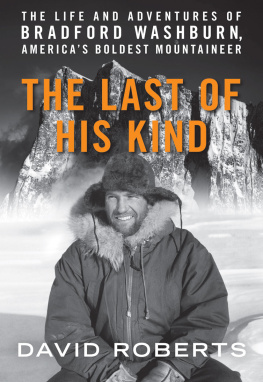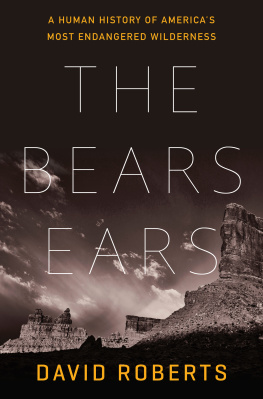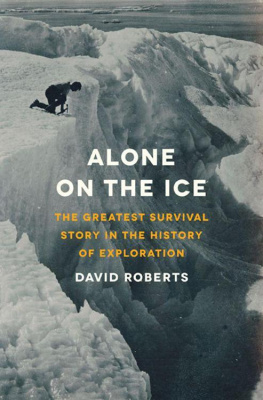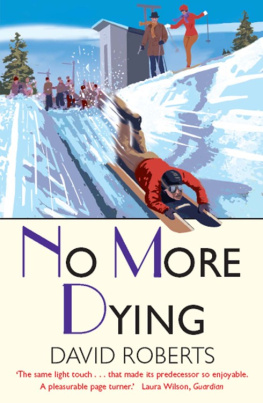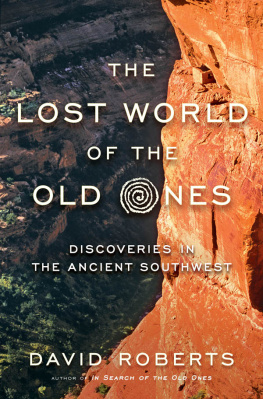Donjek
The date was July 13, 1937. Brad Washburn and Bob Bates knew they would have to cross the Donjek Rivernot only to reach the nearest outpost of civilization, but simply to survive the most desperate adventure of their young lives. But on the map they carried, the vast lowland tundra through which the Donjek flowed north toward its eventual junction with the Yukon was a blank.
For the past twenty-two days, Washburn and Bates had been marooned in the heart of the subarctic Saint Elias Range, a few miles east of the Alaska border in Canadas Yukon Territory. Twenty-seven and twenty-six years old, respectively, Brad and Bob had already shared two mountaineering expeditions to the great ranges of the Far North. In addition, Brad had led three other ventures among the unclimbed peaks of Alaska and the Yukon. Despite their youth, the two best friends had already become masters of a discipline practiced at the time by relatively few men (and by a tiny handful of women) in the world.
Now, as they trudged eastward, they heard the deep roar of the river before they were close enough to see it. It was not until dusky midnight that the men reached its banks. The Donjek is a terror, Brad wrote in his diary the next morning, rushing like fury. Brad and Bob knew that the Donjek was a major river. What they had not fully reckoned was how the past three weeks summer warmth had melted its glacial sources, causing the current to surge into pell-mell flood.
The only other thing the men knew about the river was that an old horsepackers trail had worked out a difficult but manageable ford across it. The crossing, Brad and Bob had been told, attacked the Donjek on a flat gravel plain where the current braided, separating into many smaller channels divided by sandbars. (Each of those channels ought to be far easier to wade than the river where it was united in a single course.) The raging torrent that the men now stared at, mesmerized and perplexed, was clearly impossible to ford.
The next day, Brad and Bob hiked along the shore until they came to what they guessed was the braided stretch the horsepackers had solved. But now it became obvious that the ford could be attempted only in low waternot in the height of midsummer flood. Knowing they had no hope of wading even the smaller channels, Brad and Bob decided to try to build a raft. They had only begun scrounging driftwood when the impossibility of such a project struck them. They had no axe, hardly any cordage to lash the logs together, andmost tellingly, as Brad wrote in his diaryThe river [is] so huge and divided into so many channels that a raft would have to be taken apart and rebuilt a thousand times to get across. (A driftwood raft would be too heavy to drag across the sandbars between channels.)
There was, however, a last resort. Twelve miles upriver to the south, the sprawling Donjek Glacier spilled out of the Saint Elias Range. From their gravel bar, Brad and Bob could just discern its snout in the distance. They were convinced that glacier was the source of the mighty river. If they could climb across the snout, they could ford the river, as it were, on stable ice. To get there would require a jaunt of twenty-four miles up and back, as Brad noted with disgust in his diary, just to get to the Donjeks far bank a mere 300 yards away. In their played-out state, that detour would require an extreme effort. But the traverse of the glacial snout promised a ticket to Burwash Landing.
So, on July 14, Brad and Bob shouldered their packs once more and started trudging south. It was 9:00 P.M. before the men reached the near edge of the glaciers snout. Just as their hopes began to surge, Bob and Brad absorbed, in a stunned glance, the cruelest shock of the whole expedition.
The blank on the map had worked its treachery. As the men saw in that instant, the Donjek Glacier was not the true source of the river. It contributed only a minor tributary flowfor now Bob and Brad beheld a cataract full of seething rapids separating the snout from the east bank. The true source of the river must be some other glacier, farther south. As the men would discover the next day, that source was in fact the Kluane Glacier. And it lay fully twenty-two miles away from the snout of the Donjek.
A further detour of forty-four miles, up to the Kluane, across its snout, and back north, would be far too much for the emaciated, famished climbers to accomplish. With a fatalism born of despair, the men climbed up onto the stagnant ice to look for a campsite. A week before, they had chucked out their cramponsmetal spikes strapped to the bottoms of ones feet, essential for traversing glaciers. The crampons would have served them well now, as they slipped and stumbled on the gritty ice.
Near midnight, they leveled out a morainal platform, crawled inside the tentwhose roof they vainly tried to prop up with an ice axe and a packboardand lay sleepless, head to toe in their single sleeping bag. The mens mood, Brad recorded, was utter dismay. Decades later he would say, That was the most miserable and frustrating night Ive ever spent in the mountains.
The next day, July 15, Brad and Bob had a rough time just getting off the snout of the Donjek Glacier, at one point having to improvise a delicate rappel with their inadequate rope, their sole anchor a bollarda prong of ice carved by Brad with his axe. Yet just as they stepped off the glacier, they spotted a possible deliverance from their predicament.
Immediately to the south, the Donjek braided once again across a gravel bar more than a mile wide. Bob and Brad counted the channels and realized there were some fifty of them. It was possible that the generous flatness of the terrain had here divided and conquered the mighty river sufficiently for the men to wade it.
Their only choice was to try. Even with their boots and trousers on, the pounding glacial water numbed the mens legs immediately and sent a kind of thermal shock wave through their bodies, culminating in intense headaches. Yet channel after channel succumbed, most of them rising no higher than knee-deep. It took the two men thirty-five minutes to reach the last two of the fifty-odd channels. Those last two channels were by far the deepest. By now, Bob and Brad were beginning to shiver with hypothermia.
They had manufactured a flimsy seventy-five-foot line by supplementing what was left of their climbing rope with cordage salvaged from their packboards. Now they tied either end of their rope around their waists. Bob was about five pounds heavier (and thus stabler) than Brad, so he inched first into the current, belayed by his partner. By midchannel, the water had risen to his waist. Barely in balance, Bob stared at the far shore (not at the current itself), and shuffled forward with agonizing slowness, lifting and planting one foot at a time. The river was too silty to see the gravel bottom; instead, Bob had to feel for it with his numbed feet.
At last he reached the far bank, then belayed Brad across. There was only one more channel to ford, but it was the widest and deepest of all.
Bob plunged in, and again the water rose to his waist. The channel was more than seventy-five feet wide, so when Brad had paid out all the rope, he had to step into the current himself. He could no longer belay his partner; instead, the two men had to move in concert, the seventy-five-foot line stretched taut between them.

